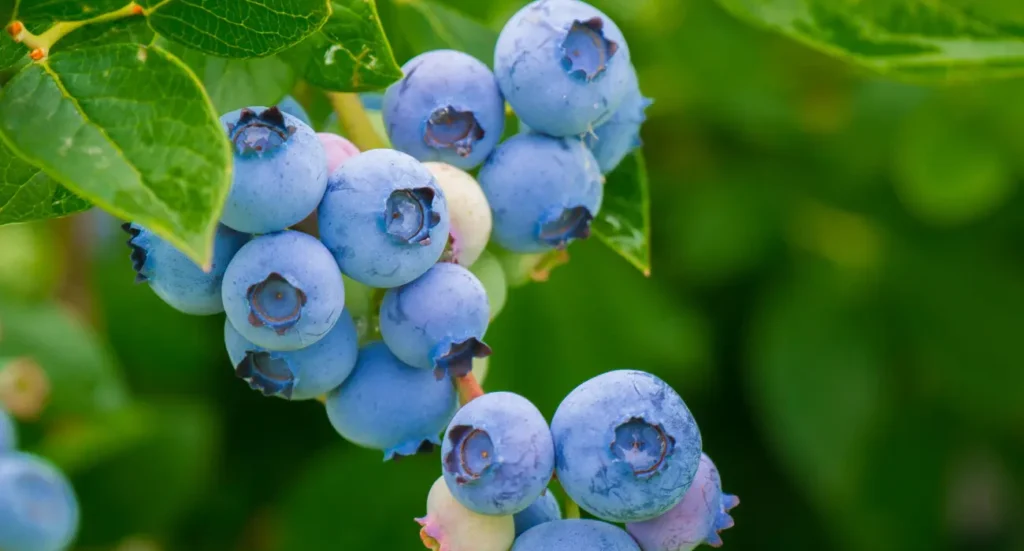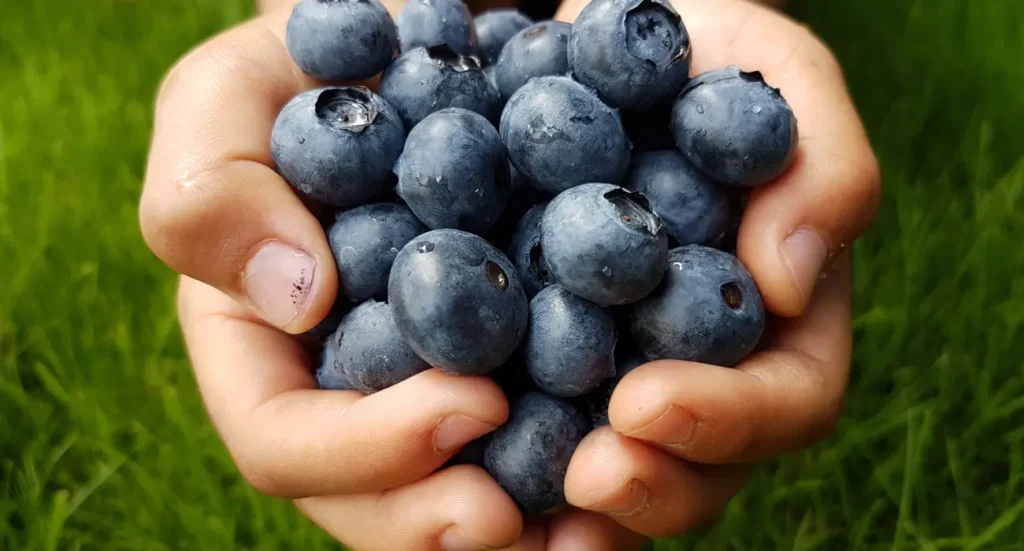Have you ever bitten into a perfectly ripe blueberry and wondered if you could grow your own endless supply of these nutritional powerhouses? The answer might surprise you. While most gardeners reach for expensive nursery plants, there’s a patient gardener’s secret that could save you hundreds of dollars while giving you decades of homegrown satisfaction.
Growing blueberries from seeds transforms a simple summer fruit into a lifelong investment. These antioxidant champions, native to North America, offer more than just delicious berries. They create stunning ornamental landscapes, provide seasonal interest, and deliver some of nature’s most potent health benefits right to your backyard.
Why Choose Seed Propagation Over Store-Bought Plants?
Traditional propagation methods like softwood cuttings and hardwood cuttings dominate commercial growing, but seed cultivation offers unique advantages for the ambitious gardener. Fresh blueberry plants from nurseries can cost $15-30 each, making a productive berry patch expensive. Starting from seeds reduces costs dramatically while allowing you to grow numerous plants for ground cover, hedgerows, or productive orchards.
The process requires patience – seedlings reach five to six inches in their first year and one to two feet in their second. However, these long-lived shrubs begin producing fruit in their second year, with yields increasing substantially in subsequent seasons. This makes blueberry seed growing an exceptional long-term garden investment.
Blueberry varieties span from wild lowbush types (Vaccinium angustifolium) to cultivated highbush selections bred for specific growing regions and performance characteristics. Popular varieties include Bluecrop, Duke, and even unique selections like Pink Lemonade with its distinctive colored berries.
Understanding Cold Stratification Requirements

Cold stratification represents the most critical step in successful blueberry seed germination. Like the parent plants, blueberry seeds require exposure to cold temperatures to break internal germination inhibitors. This mimics natural winter conditions that signal spring growth.
The stratification period varies from 30 to 120 days, depending on seed storage conditions and environmental factors. Fresh seeds or recently frozen fruit typically need only 30 days of refrigeration. However, dried seeds or long-term frozen fruit storage may require 90 to 120 days of cold treatment for optimal germination rates.
Two effective cold stratification methods work well for home gardeners:
Outdoor Winter Method: Place seeds in a tray filled with fine, moistened sphagnum moss during fall. Create a two to three-inch moss layer, distribute seeds evenly, and cover lightly with ⅛ to ¼ inch of additional moss. Allow natural winter conditions to provide stratification, then begin watering in spring to trigger germination.
Refrigerator Method: Mix seeds with slightly damp paper towels, sand, or sphagnum moss in sealed bags. Store in the refrigerator for 90 days before sowing. This controlled approach ensures consistent temperature and moisture levels throughout the stratification period.
Seed Processing and Extraction Techniques
Whether harvesting from wild plants or store-bought fruit, proper seed processing ensures viable planting material. Two methods effectively separate seeds from berry pulp:
Blender Method: Combine ¾ cup of thawed berries with ¾ cup of water in a blender. Pulse on high speed for 10-15 seconds, then allow the mixture to settle for five minutes. Viable seeds sink to the bottom while pulp floats. Carefully pour off the floating material, add fresh water, and repeat until only clean seeds remain. Strain through a fine mesh lined with paper towels, then air-dry seeds completely.
Manual Processing: Mash ¾ cup of thawed berries in a bowl to expose pulp and seeds. Transfer to a jar with a tight lid, add water, and shake vigorously to separate materials. Use the same water-addition and settling technique as the blender method until seeds are clean and ready for drying or immediate planting.
Selecting the Right Varieties for Your Climate
Blueberry varieties demonstrate remarkable hardiness, tolerating winter temperatures as low as -30°F (-34°C) across USDA zones 3-10. However, selecting appropriate varieties for your specific climate ensures successful fruit production and plant longevity.
Northern regions benefit from high-chill varieties requiring 800 to 1,000 hours of winter temperatures between 32-45°F (0-7°C). These selections include many traditional highbush varieties bred for cold tolerance and consistent production.
Southern and warm-climate gardeners should choose low-chill varieties needing only 150 to 800 chill hours. Southern highbush and rabbiteye types thrive in warm conditions while producing abundant fruit with minimal winter requirements.
Lowbush varieties create excellent ground cover in harsh climates, while highbush selections provide larger fruit and higher yields for fresh eating and processing.
Creating Ideal Growing Conditions

Blueberry cultivation succeeds in various settings, from traditional garden beds to containers and raised beds. However, specific environmental conditions optimize growth and fruit production.
Sunlight Requirements: Full sun exposure – six or more hours daily – produces the highest fruit yields. While plants tolerate partial shade, excessive shade reduces flowering and fruiting significantly.
Soil Conditions: Blueberries thrive in highly organic, sandy soils with excellent drainage. Most importantly, they require acidic conditions with pH levels between 4.0 and 4.8. This acidic preference means they grow well alongside azaleas, rhododendrons, and other acid-loving plants.
Soil Amendments: Maintain proper acidity using natural materials like pine needles, oak leaves, peat moss, and coffee grounds. These organic materials gradually lower soil pH while improving soil structure and water retention.
Water Requirements: Consistent moisture proves essential for healthy blueberry plants. Their shallow root systems cannot access deep soil moisture, making them drought-sensitive. Provide one to two inches of water weekly during the growing season, adjusting for rainfall and soil conditions.
Indoor Seed Starting Process
Starting blueberry seeds indoors requires attention to temperature, moisture, and growing medium. After completing cold stratification, seeds are ready for germination.
Fill seed trays two to three inches deep with pre-moistened, finely screened sphagnum moss. Avoid large moss chunks that may interfere with tiny seedlings. Distribute seeds evenly across the surface and cover lightly with moss or ¼ inch of potting soil. Optional newspaper covering helps maintain consistent moisture levels.
Germination temperatures between 60-70°F (16-21°C) provide optimal conditions for sprouting. Keep growing medium consistently moist but never waterlogged. Patience is essential – blueberry seeds may take up to three months to germinate, though some varieties sprout within several weeks.
Seedling Care and Development
Blueberry seedlings emerge as tiny, grass-like shoots requiring careful handling and appropriate care. Remove newspaper covering once sprouts appear, then monitor growth closely.
When seedlings reach several inches tall, transplant them carefully into individual three to four-inch pots filled with a mixture of peat moss, sand, and potting soil. Handle delicate roots gently during transplantation to avoid damage.
Place potted seedlings in a sunny, protected location and maintain consistent soil moisture. After three to four weeks of establishment, begin feeding with diluted organic liquid fertilizer at half-strength. Plan to keep seedlings in pots for approximately one year while developing strong root systems and top growth.
Transplant timing occurs when plants reach six to eight inches tall. Move them to larger containers or garden locations using the same acidic soil mixture. Allow continued growth to 12-18 inches before final garden transplanting.
Hardening Off and Transplanting
Hardening off prepares indoor-grown seedlings for outdoor conditions through gradual acclimation. Place plants in a protected outdoor area for one to two weeks before transplanting, gradually increasing exposure to wind, temperature fluctuations, and direct sunlight.
Protect seedlings from strong winds, cold nights, and intense afternoon sun during this transition period. This preparation significantly improves transplant success rates.
Transplant timing varies by climate. In mild regions, fall planting during dormancy works well. Cold-climate gardeners should plant in early spring to allow establishment before winter. Areas with late frosts benefit from frost cloth protection for newly planted seedlings.
Long-Term Care and Maintenance
Established blueberry plants require consistent care for optimal production and plant health. Their shallow root systems benefit from thick mulch layers applied in spring and fall. Shredded bark, compost, or leaves provide excellent insulation while retaining soil moisture and regulating temperature.
Container-grown blueberries dry out more quickly than ground plantings. Check soil moisture regularly – when dry several inches deep, provide thorough watering. This typically occurs more frequently than with garden-planted specimens.
Fertilization requires caution with nitrogen-sensitive blueberries. Use balanced fertilizers designed for acid-loving plants like azaleas, holly, rhododendrons, and camellias. Established plants in organic soils may require minimal supplemental nutrition. Annual spring applications or organic amendments like blood meal, bone meal, and kelp extract provide necessary trace minerals.
Pruning for Health and Production
Pruning blueberry bushes maintains plant health while encouraging fresh growth and continued fruit production. Plan major pruning for late winter or early spring before bud break.
Young plants need only light shaping and thinning to improve air circulation and form. Remove dead, diseased, or crossing branches whenever they appear. During the first year, remove spent flowers to encourage root development and top growth rather than fruit production.
Mature bush management involves removing aging stems for continued productivity. Blueberries reach full size and production around seven years. During winter dormancy, remove older stems exceeding one inch in diameter. Removing one-third of mature stems annually promotes new growth and maintains fruit production.
Frequently Asked Questions
1. How long does it take to grow blueberries from seeds?
Blueberry seeds typically take 2-3 months to germinate after cold stratification. Seedlings reach 5-6 inches in their first year and begin producing small amounts of fruit in their second year. Full production develops over 5-7 years as bushes mature.
2. Do I need to plant multiple blueberry varieties for fruit production?2.
While some blueberry varieties are self-fertile, planting multiple varieties significantly improves fruit set and berry size through cross-pollination. Plan for at least two different varieties that bloom at similar times for best results.
3. Can I grow blueberries from seeds in containers permanently?
Yes, blueberries grow successfully in large containers (minimum 18-24 inches wide) with proper acidic soil mix and consistent care. Container plants require more frequent watering and annual fertilization but offer flexibility for small spaces and climate protection.
Key Takeaways:
- Cold stratification for 30-120 days is essential for seed germination
- Proper seed processing ensures viable planting material
- Acidic soil with pH 4.0-4.8 is crucial for healthy growth
- Patience pays off – seedlings become productive bushes over 5-7 years
- Container growing offers flexibility for small spaces and climate control
- Multiple varieties improve fruit production through cross-pollination

